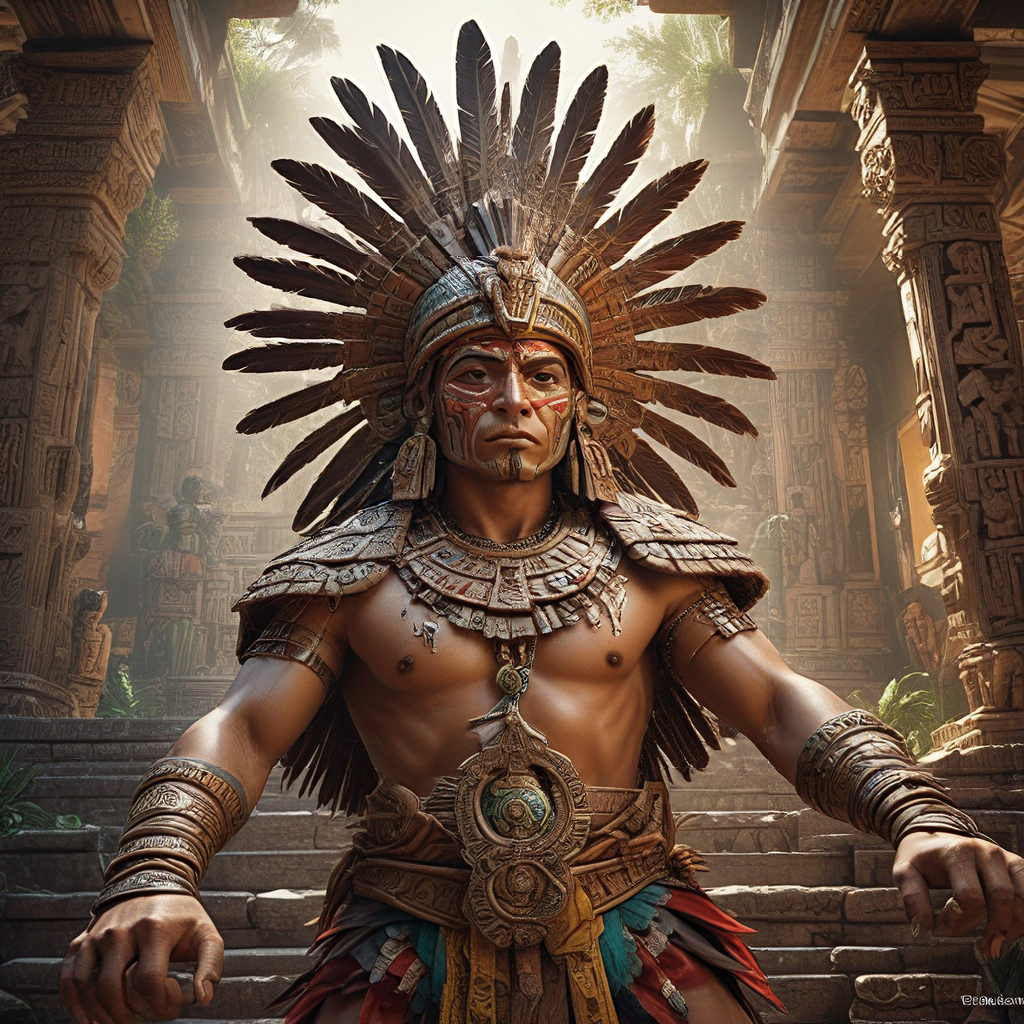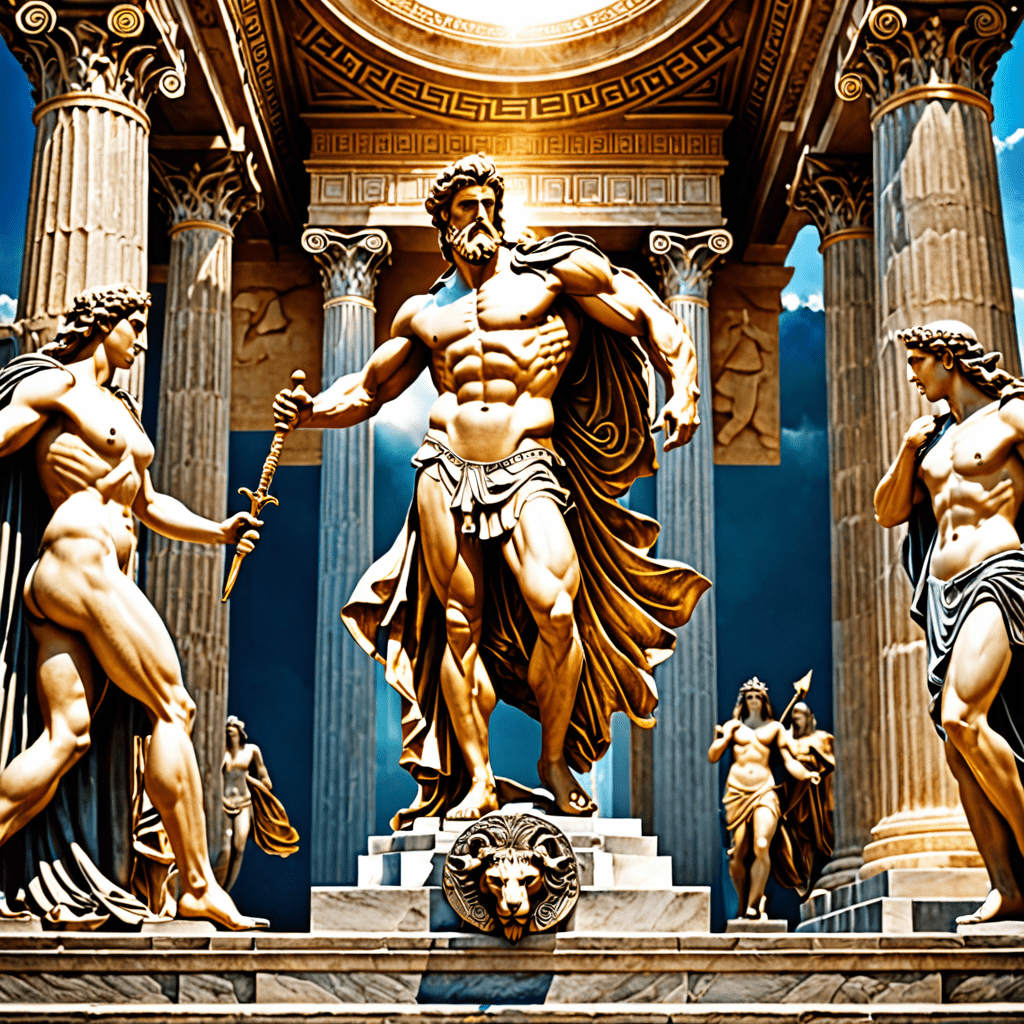Aztec Mythology in Art and Architecture
The Aztec civilization, known for its intricate art and impressive architecture, was deeply rooted in a rich and complex mythology. Their beliefs about the world, the gods, and the afterlife heavily influenced their creative expressions. From the majestic pyramids to the delicate sculptures, Aztec art is a window into the fascinating world of their mythology.
The Pantheon of Gods and Goddesses
The Aztec pantheon was vast and diverse, populated by a wide array of deities who governed various aspects of life.
Huitzilopochtli, the sun god, was the most important deity to the Aztecs. He was depicted as a fierce warrior, often adorned with feathers and a hummingbird, symbolizing the sun's movement across the sky. His name translates to "Hummingbird of the South," and he is believed to have guided the Aztecs to their new home in the Valley of Mexico.
Tlaloc, the god of rain and fertility, was a powerful deity worshipped throughout Mesoamerica. His name meant "the one who makes things grow," reflecting his importance in the agricultural society of the Aztecs. He was often depicted with a blue face and a crown of water lilies, representing the rain and the life-giving power of water.
Quetzalcoatl, the feathered serpent god, was a major deity associated with knowledge, creation, and the arts. He was believed to have brought civilization to the Aztecs, teaching them agriculture, art, and science. Quetzalcoatl was associated with the morning star, Venus, and his image was often seen in depictions of the cosmos.
Tezcatlipoca, the god of the night, magic, and fate, was a powerful and sometimes unpredictable deity. His name means "smoking mirror," referencing his ability to see into the future and control destiny. He was often depicted wearing a mirror on his chest, representing his knowledge of the unseen world.
Coatlicue, the earth goddess and mother of Huitzilopochtli, was a powerful and often fearsome figure. She was depicted with a skirt made of snakes, a necklace of skulls, and a skull-like face, representing the cycle of life and death.
These are just a few of the many important gods and goddesses in the Aztec pantheon. Each deity played a significant role in Aztec mythology and influenced the way they viewed the world around them.
The Importance of Ritual and Sacrifice
Ritual and sacrifice played a crucial role in Aztec religion. The Aztecs believed that the gods required human blood to maintain the balance of the universe. This belief stemmed from the idea that the gods had sacrificed themselves to create the world, and they needed humans to reciprocate this sacrifice.
Human sacrifice was a complex and often gruesome ritual, with different gods demanding different types of sacrifices. The most common sacrifices involved prisoners of war or other captives. The sacrifice was often performed at the top of a temple pyramid, where the victim's heart would be ripped out and offered to the gods.
The Aztecs believed that by sacrificing humans, they could influence the gods to provide for them. They also believed that the souls of the sacrificed would join the sun god, Huitzilopochtli, in the afterlife.
The Symbolism of Architecture
Aztec architecture is a testament to the ingenuity and artistic skill of the people. Their buildings were not just structures for shelter but also powerful symbols of their beliefs and rituals.
The Templo Mayor (Great Temple), located in the heart of Tenochtitlan, was a massive structure dedicated to the sun god Huitzilopochtli and the rain god Tlaloc. It was a microcosm of the Aztec cosmos, with the upper level representing the heavens and the lower level symbolizing the underworld.
The pyramid structure was a common feature of Aztec architecture, representing the connection between the earthly realm and the celestial realm. The steps of a pyramid were often decorated with sculptures and murals depicting stories from Aztec mythology, guiding the viewer along the spiritual journey to the top.
Decorative elements like serpents, jaguars, and eagles were incorporated into Aztec architecture to symbolize the power and majesty of the gods. Serpents, for example, represented fertility and the cycle of life and death, while jaguars represented strength and courage.
- Symbolic colors played an important role in Aztec art and architecture. Red, for example, symbolized blood and sacrifice, while blue represented water and fertility. These colors were used strategically in murals, sculptures, and clothing to convey specific meanings and reinforce the importance of their beliefs.
Aztec architecture was a visual expression of their deep religious beliefs and their understanding of the cosmos.
The Influence of Mythology in Art
Aztec mythology was a powerful influence on their art. Artists created stunning depictions of gods and goddesses, using various materials and techniques like painting, sculpture, and textiles. The Aztec people believed that art could connect them to the divine and reinforce their religious beliefs.
Gods and Goddesses in Art: The Aztec people portrayed their gods and goddesses in many forms, from grand statues to intricate carvings on everyday objects. For example, Huitzilopochtli, the sun god, was often depicted as a warrior with hummingbird feathers, emphasizing his strength and connection to the sun. Similarly, Tlaloc, the rain god, was represented with blue facial paint and a crown of water lilies, signifying his power over rain and fertility.
Mythological Symbols and Motifs: The Aztecs incorporated symbols and motifs from their mythology into their art. The sun, moon, and stars were common elements representing the cosmos and the cyclical nature of life. Serpents, representing fertility and connection to the underworld, often adorned temples and sculptures. The jaguar, a symbol of power and strength, was a popular motif, often representing Tezcatlipoca, the god of the night.
Textiles and Clothing: The Aztecs were skilled weavers and their textiles displayed intricate patterns and motifs inspired by their mythology. These patterns were often used in clothing, blankets, and ceremonial garments, reflecting their social status and connection to the gods. The feathered serpent, Quetzalcoatl, was a common motif in textiles, representing the balance between the earthly and celestial realms.
By weaving their mythology into their art, the Aztecs created a rich tapestry of visual storytelling that mirrored their worldview and connected them to the spiritual realm.
The Interpretation of Aztec Mythology in Modern Art
Aztec mythology continues to inspire contemporary artists. Modern artists explore its themes and imagery to express their own ideas about culture, identity, and the human condition.
Exploration of Themes: Contemporary artists draw from Aztec mythology to explore themes of power, sacrifice, and the duality of good and evil. The bloodletting and human sacrifice rituals prevalent in Aztec mythology are often interpreted as a commentary on societal violence and the human capacity for both good and evil.
Reimagining of Imagery: Modern artists reinterpret classic Aztec imagery in new and innovative ways. They use contemporary materials and techniques to create modern interpretations of Aztec gods and goddesses, blending traditional motifs with contemporary aesthetics.
Cultural Identity: Aztec mythology plays a significant role in exploring cultural identity and the relationship between traditional knowledge and modern society. Contemporary artists draw from this rich mythology to understand and express the ongoing influence of Aztec culture in the modern world.
FAQ
Q: Why is Aztec mythology important?
A: Aztec mythology provides insight into their understanding of the world, their ceremonies, and their worldview. It is a valuable resource for understanding their complex society and artistic expressions.
Q: What are some of the most common Aztec symbols?
**A: ** Common symbols include the feathered serpent (Quetzalcoatl), the jaguar (Tezcatlipoca), the sun, the moon, and the stars.
Q: How is Aztec mythology represented in contemporary art?
A: Contemporary artists use Aztec mythology to explore themes of power, sacrifice, cultural identity, and the human condition, reinterpreting imagery and creating new visual narratives.



